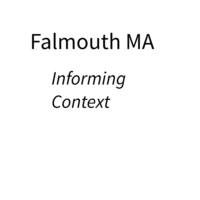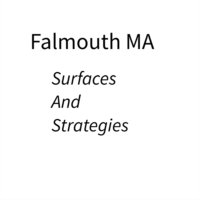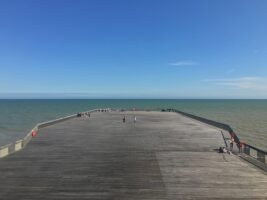Krishna Seth one of our tutors from the Sustainable Prospects module was the guest tutor for this Group Critique. I created a portfolio based on the 3rd version of my gallery https://simonfremont.com/exhibition-layout-revised-version/ layout plus the exhibition text. The pdf of the material is embedded below.
I outlined the context of the project in its exhibition form to the group that included Jo Sutherst, Philip Singleton and Ashley Truckey.
The feedback from Krishna was that she liked the landscape images which she felt were very strong. She felt that some of the portrait images did not hod their own when compared to the landscapes. There was a positive response on using the deckchairs to frame panels of an overall larger image and the decision to position the installation piece at the end of the gallery she felt made sense. Krishna asked if people would be able to sit on the chairs. I explained that I was not intending to print on to canvas that would allow people to sit on the chairs transforming them to having a dual purpose of piece of art and a functional item. The whole premise is the chairs are lent against the wall showing that their use for the day is over.
Philip suggested that the text for the exhibition should be organised in multiple columns to make it easier to read. This is something that I need to consider and test before send the graphics to the printers.
Jo showed her layouts for the gallery which had evolved since the earlier layouts from the Pecha Kucha talk at the start of the module. The premise for the exhibition still makes sense however I am not sure that the installation plans really hold together as they feel a bit random. There is a plan to introduce small LCD panels though how they with the A1 single prints and the images containing multiple variations of a selfie requires further exploration. It is possible that Jo is introducing to many disparate elements into the gallery space.
Philip shared a video of his gallery installation as at the time of the Group Critique his show had just opened. The layout overall looked well considered and overall it fitted together with it showing 3 different surfaces. Traditional framed prints, the work printed on concrete and the two projections.
In the case of the prints I would have avoided the use of the little white border within the black surrounds as visually the eye is drawn to light spaces which means we do not focus on the image within the frame.
The double and single lines of concrete images at different sizes was well considered. I found the fact that the concrete images did hard a slight incline due to only being fixed to the hanging cables at the top a distraction. Especially with some being hung as a pair on the hanging wires. This was even more evident with the fact some of the images were close to a corner leaving space might have reduced the visual impact.
I really liked the projected pieces though the fact the image sequences are slightly out of sync needs clear contextualisation in his Critical Review of Practice.
Ashley shared her book dummy which as her work will be resolved as a book. Depending on the each size of the book I can image a family sitting round the book looking at the images and the associated text. The level of text compared to images felt right to me as the book is more a visual story than a textual one. I believe Ashley needs to consider the sequencing of images especially when she explained that the images in subsequent pages do not always related to a single father. Making into a series of chapters that explore each father relationship I felt would be more powerful and allow you to compare and contrast different relationships especially in a world where we are exposed to stories of adults that talk about abusive parent child relationships. The narrative feels to naïve compared to what is being played out in society today, this maybe a reflection of the values of Ashley as an individual. Though this should not detract from the consistency and quality of the images contained within the book.




